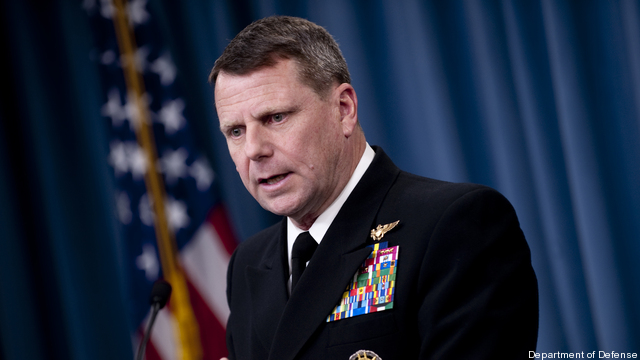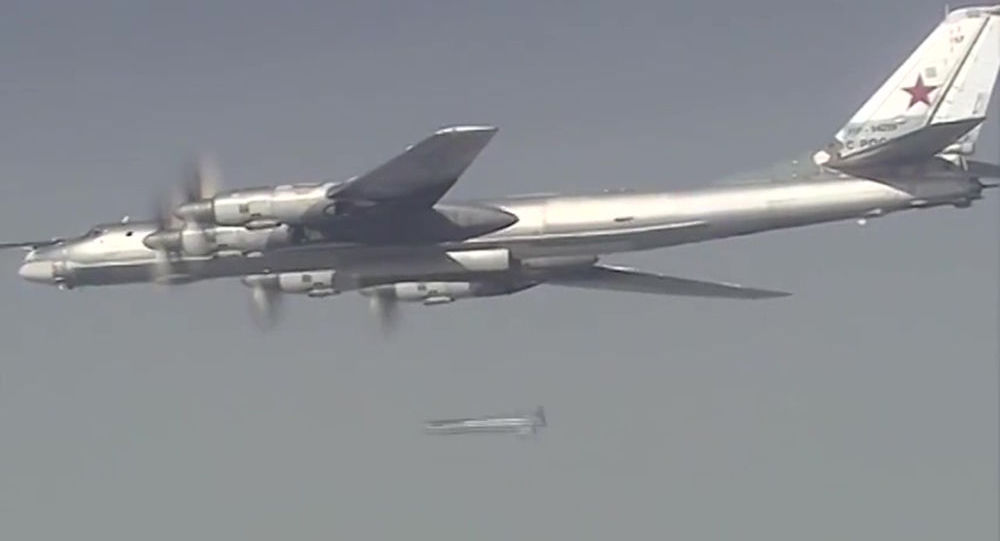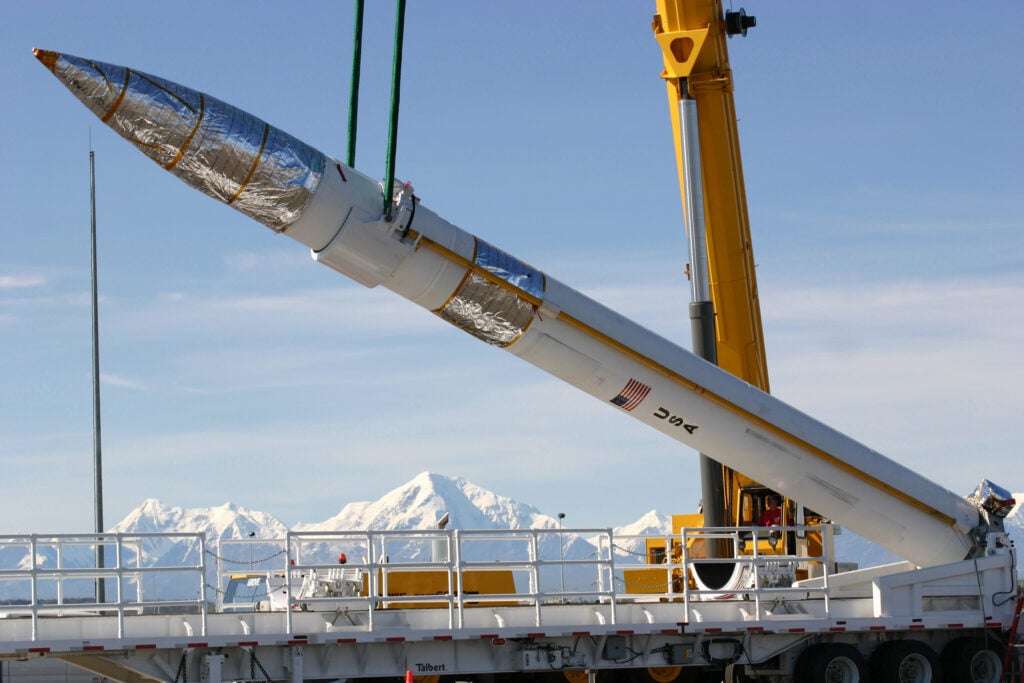 In less than three years, Northern Command has witnessed an important strategic shift. North Korea’s leadership changed and the acceleration of their nuclear weapons and missiles program are changing the strategic calculus for the United States and Canada.
In less than three years, Northern Command has witnessed an important strategic shift. North Korea’s leadership changed and the acceleration of their nuclear weapons and missiles program are changing the strategic calculus for the United States and Canada.
Meanwhile, the re-launch of Russia under President Putin has Russia’s presence felt in the Middle East, Asia and Europe. The modernization of the Russian forces, and the evolving tactical nuclear force and nuclear doctrine of Russia are changing the threat calculus for the defense of the homeland.
It would seem a good time to rethink NORAD’s mission areas and make it a very focused and integrated air-sea command to defend rapidly evolving strategic approaches to the North American continent. With Canada looking to modernize their military forces it might take advantage of the innovations underway to shape an integrated air-naval force while Canada faces the challenges of recapitalization.
On March 31, we sat down with the current NORAD and NORTHCOM Commander, Adm. Bill Gortney, at his office in Colorado Springs, Colo., to discuss the current strategic environment and the way ahead. Air Force Gen. Lori Robinson is posed to replace Gortney after a friendly nomination hearing this week, but her Senate confirmation vote is still to come. Here’s what Gortney had to say:
Q: It is clear that many people do not understand your command and its central significance for Canadian and American security and defense.
How would you describe your command?
A: We do a range of mission sets, from tracking Santa to thermonuclear war. But we are a different combatant command than the other geographic combatant commands, and the reason, is who’s in charge in dealing with the threats to the homeland.
In contrast, NORAD is pretty clear-cut. It is an air mission command, although the changes over time have been significant facing the command. NORAD was born in the Cold War when the air battle was going to occur above the Great Lakes and over the Seattle area. After the Cold War, the 9/11 attack shifted the focus of NORAD to dealing with a different class of threats. But it is still an air defense command.
NORTHCOM was born because of the 9/11 attacks for there was no commander of the homeland. But we are not the commander in charge of defending against terrorist attacks for that is the mission of the Departments of Homeland Security and Justice. We are a supporting command to them in dealing with terrorist threats.
The rise of China and the new Russia are driving a reconsideration of the NORTHCOM mission, for we really do need a commander for the homeland in a more classic sense. But when we were stood up it was not done to deal with more traditional or classic defense threats.
Q: The Russians are not the Soviets, but they are generating new capabilities, which clearly provide a need to rethink homeland defense.
How would you characterize the Russian dynamic?
A: With the emergence of the new Russia, they are developing a qualitatively better military than the quantitative military that they had in the Soviet Union. They have a doctrine to support that wholly government doctrine. And you’re seeing that doctrine in military capability being employed in the Ukraine and in Syria.
For example, the Russians are evolving their long-range aviation and at sea capabilities. They are fielding and employing precision-guided cruise missiles from the air, from ships and from submarines.

Their new cruise missiles can be launched from Bears and Blackjacks and they went from development to testing by use in Syria. It achieved initial operating capability based on a shot from a deployed force. The Kh-101 and 102 were in development, not testing, so they used combat shots as “tests,” which means that their capability for technological “surprise” is significant as well, as their force evolves.
The air and sea-launched cruise missiles can carry conventional or nuclear warheads, and what this means is that a “tactical” weapon can have strategic effect with regard to North America. Today, they can launch from their air bases over Russia and reach into North American territory.
The challenge is that, when launched, we are catching arrows, but we are not going after the archers. The archers do not have to leave Russia in order to range our homeland.
And with the augmentation of the firepower of their submarine force, the question of the state of our anti-submarine warfare capabilities is clearly raised by in the North Atlantic and the Northern Pacific waters.
What this means for NORAD as well is that limiting it to air defense limits our ability to deal with the multi-domain threat. It is an air and maritime threat and you need to go on that tack and defense through multiple domains, not simply the classic air battle.
Q: How important is Canada to this effort?
A: Crucial. But the challenge for us is to shape what we in the US Navy call the NIFC-CA or Naval Integrated Fire Control—Counter Air battle network solution for North American defense.
Put in simple terms, we need to shape a more integrated air and maritime force that can operate to defend the maritime and air approaches to North America as well as North America itself.
We can look at the evolving threat as a 10 o’clock and a two o’clock fight, because they originate from the 10 and two. And the 10 o’clock fight is primarily right now an aviation fight. They’re moving capability there, but it’s nothing like what they have at the two o’clock fight. The two o’clock fight is more of a maritime fight.
This means that as the NORTHCOM Commander, I can only defend North America if I can reach deeply into the U.S. European Command area of operation. I need EUCOM to handle the two o’clock fight for me. Thus, it is critical to net and synchronize our operational plans so that we are not just fighting in isolation and this shift is a pretty significant change for us here at NORAD and NORTHCOM.
One way to think about it is that I’m a module in EUCOM’s bigger picture, because if it’s a Russian problem, EUCOM owns Russia. And so I’m supporting EUCOM. EUCOM is supporting to me when it comes to the defense of homeland, but when it becomes a Russian problem, then it’s probably going to start, originate in Europe and then we are a piece of that defense effort.
Q: The nuclear dimension is a key part of all of this, although there is a reluctance to talk about the Second Nuclear Age and the shaping of deterrent strategies to deal with the new dynamics.
With regard to Russia, they have changed their doctrine and approach.
How do you view their approach and the challenge to us which flows from that change?
A: Both the Chinese and Russians have said in their open military literature, that if conflict comes, they want to escalate conflict in order to de-escalate it.
Now think about that from our side. And so now as crisis escalates, how will Russia or China want to escalate to deescalate?
They’ll definitely come at us through cyber. And they’ll deliver conventional and potentially put nukes on the table. We have to treat the threat in a global manner and we have to be prepared to be able to deal with these through multiple domains, which include cyber, but that’s not in NORAD or NORTHCOM mission sets.
We clearly need the capacity to have the correct chain of command in order to confront this threat; and if you look at where we are today with NORAD or NORTHCOM, we are only dealing with an air defense threat and managing to that threat.
We are not comprehensive in a manner symmetrical with the evolving threat or challenges facing North American defense.
Q: Clearly, the new leadership in North Korea is working to shape new nuclear and strike capabilities. There probably is NO homeland defense threat more pressing and clear and present than the nuclear threat from North Korea. How do you view this challenge?
A: I own the trigger to deal with this threat in consultation with the National Command Authority.
We are prepared to shoot in our defense. We have invested in a ground missile defense system in Alaska; we have 44 interceptors in all. We have a sophisticated system of systems in place, but we need to improve its robustness as the system has been built over time with the fits and starts politically with regard to the system.
I testified, along with the head of the Missile Defense Agency, with regard to our system and the ways to improve it. We need the maintenance and modernization of the system and the tests in order to assure ourselves that it’s going to work and I have high confidence in the system at the current time.
Then, we need improvements in the sensors. And we need investments and research and development to get us on the correct side of the cost curve, because both the theater ballistic missile defense and ballistic missile defense of the homeland have been on the wrong side of the cost curve.
We’re shooting very dumb rockets down, inexpensive rockets, with very expensive rockets, and we’re only doing it in the case of ballistic missile defense in mid-course so that the debris doesn’t fall on the homeland.
What we need to do is invest in those technologies that keep them from being launched, detect them, kill them on the rails, kill them in boost phase, start knocking the count-rate down instead of just taking a single rocket and shooting it down in mid-course.

A Ground-Based Interceptor is lowered into its missile silo in Alaska.
It is about the kill chain, and shaping a more effective missile defense kill chain which is integratable in the overall North American NIFC-CA dtype capability which can integrate air and sea systems which is important to deal with the evolving threat environment.
But one has to think through our deterrence strategy as well. What deters the current leader of North Korea? What deters non-state actors for getting and using a nuclear weapon? What will deter Russia from using tactical nuclear weapons in the sequence of how they view dealing with conventional war? It is not my view that matters; it is their view; how to I get inside the head of the 21st century actors, and not simply stay in yesterday’s set of answers?
Q: Canada faces a significant challenge with regard to defense recapitalization. You have stated that Canada is a key player in shaping an effective North American defense. Obviously, you are not going to enter into Canadian debates about specific defense choices, but what might you say at a more general capability level with regard to what you think is needed?
A: For 58 years, we have had a bi-national command, NORAD. The current government faces a set of tough problems, not the least of which due to past governments not addressing re-capitalization. Clearly, what they need to do is to recapitalize their air and maritime force, and preferably, one that can work together from the ground up as an integrated force. I think NORAD needs to become a multi-domain command, and their forces could flow into that command and out of that command as a key enabler.
Q: Last time we spoke with your predecessor primarily about the Arctic, so let us close there. How do you view the Arctic area of operations?
A: Obviously, this is an area in transition on the way to become an area of transformation. But from my perspective, I don’t have to enter the often-theological debate about the Arctic and its future. What I do need to do as the NORAD and NORTHCOM Commander is to focus on the Arctic as a transit area of the threats to North America. The Artic is and will always be an avenue of attack; and that is my primary focus and concern.
Navy jet trainer fleet operations remain paused after engine mishap
One week after the incident, a Navy spokesperson says the service is continuing to assess the fleet’s ability to safely resume flight.



























